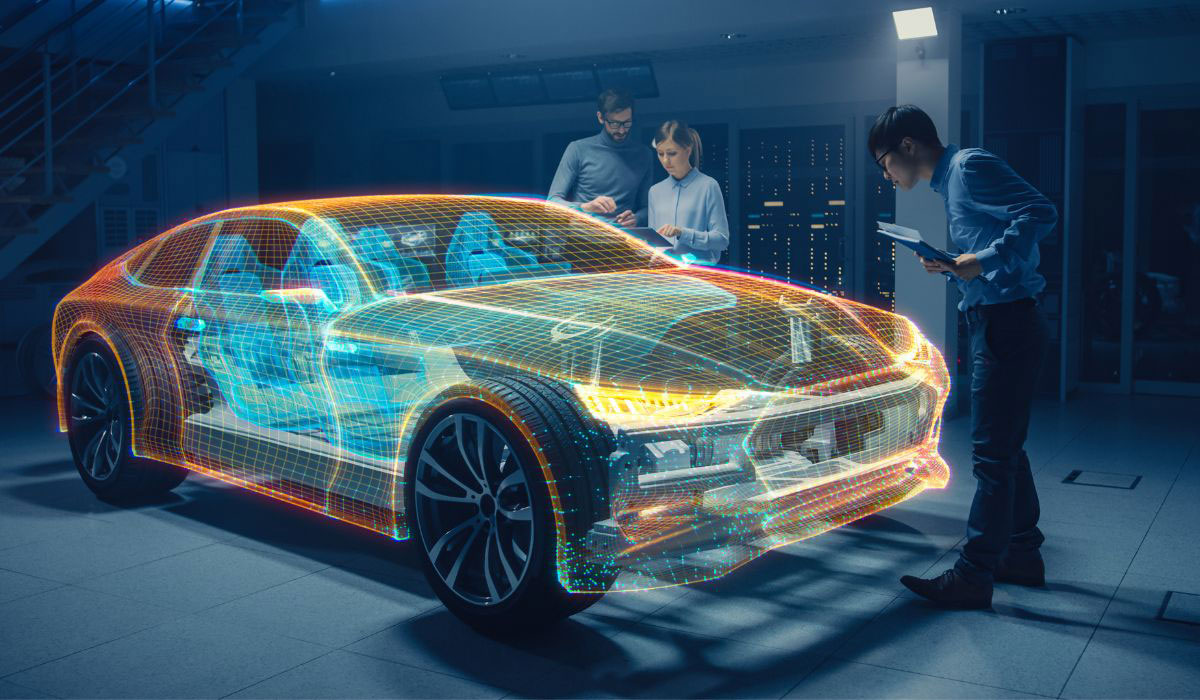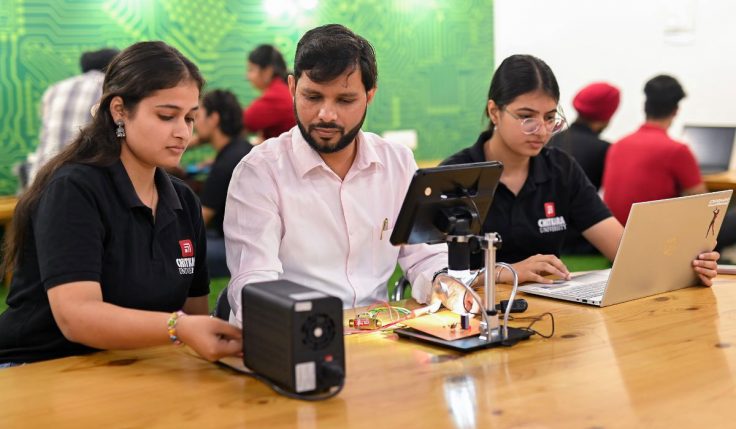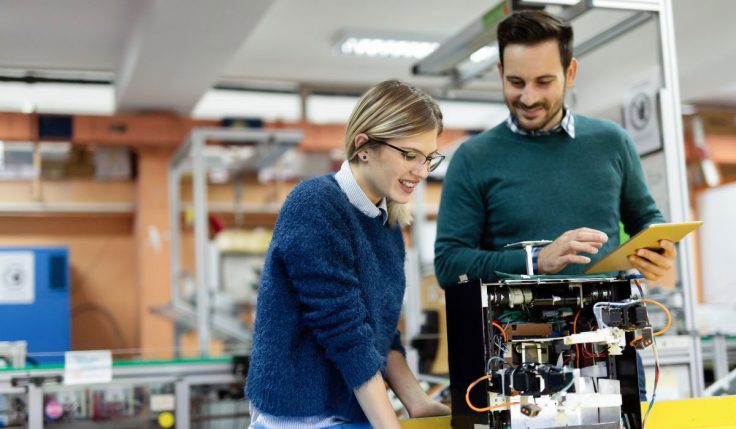The automotive industry has been a symbol of innovation and progress for over a century, with vehicles evolving from simple mechanical machines to complex technological marvels. Today, a new wave of transformation is sweeping across the automotive landscape, driven by the integration of software engineering. From self-driving cars to advanced safety features and connected systems, software is redefining the way we think about automobiles.
Let’s explore how software engineering is revolutionizing the automotive industry.
Autonomous Driving: Paving the Path to the Future
Software engineering is at the core of the autonomous driving revolution. Self-driving cars rely on intricate algorithms, machine learning, and sensor fusion to perceive and navigate their surroundings. These technologies enable vehicles to make real-time decisions, avoid obstacles, and adapt to changing traffic conditions. The intersection of software and automotive engineering has the potential to reshape mobility, making transportation safer, more efficient, and accessible for everyone.
Advanced Driver Assistance Systems (ADAS): Enhancing Safety
Software-driven Advanced Driver Assistance Systems (ADAS) are transforming the way we interact with vehicles. Features like adaptive cruise control, lane-keeping assistance, and automatic emergency braking rely on complex software algorithms to monitor the environment and assist drivers in real time. ADAS technologies enhance safety by mitigating the risks of human error and are a stepping stone toward fully autonomous vehicles.
Connected Vehicles: Redefining Connectivity
Modern vehicles are becoming more than just modes of transportation; they’re becoming connected hubs. Software engineering enables vehicles to communicate with each other and with external infrastructure. This connectivity enhances navigation, enables real-time traffic updates, and even facilitates over-the-air software updates to improve performance and introduce new features.
Electric and Hybrid Propulsion: Optimizing Efficiency
The shift toward electric and hybrid vehicles is also reliant on software engineering. Battery management systems, regenerative braking, and energy-efficient routing are all controlled by software to maximize the efficiency of these vehicles. Software optimization ensures that electric and hybrid vehicles can deliver superior performance while minimizing their environmental impact.
User Experience: Elevating Interiors
Software is not only transforming the performance of vehicles but also the user experience. Infotainment systems, touchscreens, voice assistants, and gesture controls have become integral parts of modern car interiors. Software engineers collaborate with designers to create intuitive, user-friendly interfaces that seamlessly integrate technology into the driving experience.
Data Analytics: Shaping Insights
The influx of data generated by connected vehicles presents a golden opportunity for the automotive industry. Software engineers leverage data analytics to extract meaningful insights from vehicle performance, driving patterns, and customer behavior. This data-driven approach empowers manufacturers to refine their products, enhance customer experiences, and make informed decisions.
Sustainability and Efficiency: Greening the Industry
Software engineering is playing a crucial role in making vehicles more sustainable. Through software optimization, engineers can enhance fuel efficiency, reduce emissions, and minimize the overall environmental footprint of vehicles. This commitment to sustainability aligns with global efforts to address climate change and create a greener future.
Embracing the Software-Driven Future
The fusion of software engineering and the automotive industry is creating a new paradigm of mobility. From autonomous driving to connected vehicles and improved sustainability, software is driving innovation at an unprecedented pace. As technology continues to evolve, the automotive industry will remain at the forefront of transformation, offering us a glimpse into a future where vehicles are not just machines but intelligent, interconnected, and eco-conscious companions on the road. The road ahead is exciting, and software engineering is steering the way.
Read this blog post: The Next Big Thing in Software Engineering Courses
In conclusion, the fusion of software engineering with the automotive industry represents a ground-breaking shift that is poised to redefine transportation as we know it. This convergence is not only revolutionizing vehicles but also shaping the entire ecosystem of mobility. From self-driving vehicles to advanced driver assistance systems, connected cars, and even electric propulsion, software engineering has become the driving force behind this transformative journey.
The integration of B.E. in Mechanical Engineering with a Mddinor in Computer Science and Engineering (CSE) adds an extra layer of significance to this transformation. It bridges the traditional mechanical engineering principles with the cutting-edge capabilities of computer science. This multidisciplinary approach equips engineers with the skills to develop innovative solutions that transcend the boundaries of traditional automotive engineering.
As we journey into this software-driven era of the automotive industry, it’s evident that collaboration between mechanical engineering and computer science is the key to unlocking unparalleled advancements. The realm of possibilities is vast, from optimizing vehicle performance and efficiency to enhancing user experience and creating new business models. This partnership is steering us toward a future where vehicles are not only smarter and safer but also seamlessly integrated into the digital fabric of our lives.
In a world where technology is constantly evolving, embracing the fusion of mechanical engineering and computer science is not just a strategic choice – it’s a necessity. As engineers and innovators, we stand at the crossroads of an exciting era, where software is not just transforming cars, but also revolutionizing how we perceive, interact with, and experience mobility. As we navigate this transformative landscape, we find ourselves on a path that merges the art of mechanical engineering with the science of software, paving the way for a future that is intelligent, efficient, and undoubtedly exhilarating.
Also, read this blog post: Why is Automotive Engineering the Right Career for You?
In the dynamic landscape of engineering, the convergence of traditional disciplines with emerging technologies is reshaping educational paradigms. Chitkara University’s innovative B.E. in Mechanical Engineering with a Minor in Computer Science Engineering (CSE) program is a prime example of this forward-thinking approach. With an emphasis on versatility and industry relevance, this program equips students with a unique skill set that caters to the demands of both mechanical and software engineering domains.
Chitkara University’s B.E. in Mechanical Engineering with a Minor in CSE offers a transformative educational experience. By combining the core principles of mechanical engineering with the versatility of computer science, students become well-rounded professionals who bridge disciplines and drive innovation. Graduates are poised for success in both the mechanical and software engineering realms, with opportunities to excel in core companies and IT giants alike.






